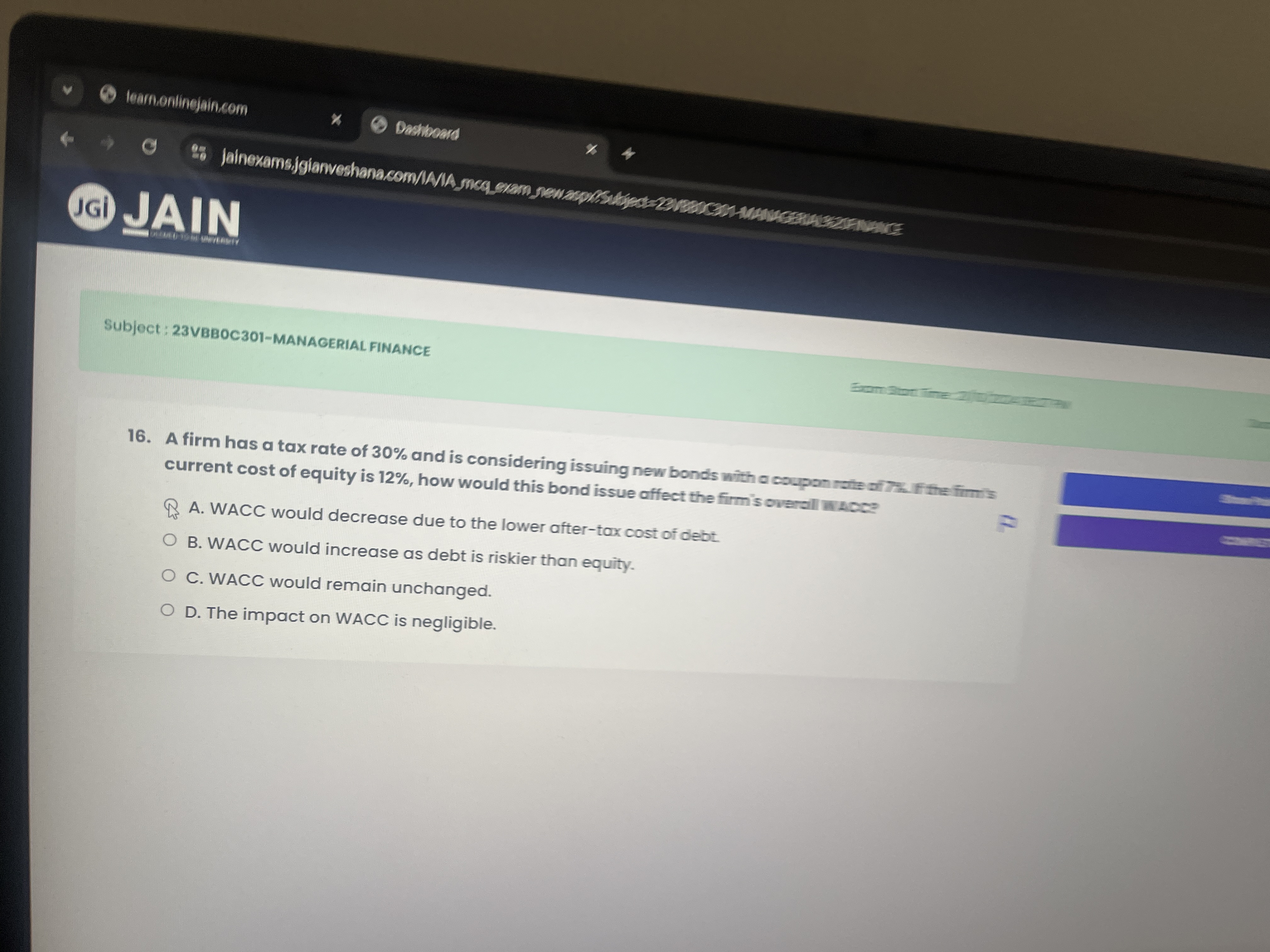A firm has a tax rate of 30% and is considering issuing new bonds with a coupon rate of 7%. If the firm's current cost of equity is 12%, how would this bond issue affect the firm's... A firm has a tax rate of 30% and is considering issuing new bonds with a coupon rate of 7%. If the firm's current cost of equity is 12%, how would this bond issue affect the firm's overall WACC?

Understand the Problem
The question is asking how the issuance of new bonds with a specific coupon rate will affect the firm's overall Weighted Average Cost of Capital (WACC), considering the tax rate and the current cost of equity.
Answer
A. WACC would decrease due to the lower after-tax cost of debt.
Answer for screen readers
A. WACC would decrease due to the lower after-tax cost of debt.
Steps to Solve
- Understanding WACC Formula
The Weighted Average Cost of Capital (WACC) is calculated using the formula:
$$ WACC = \left( \frac{E}{V} \times r_e \right) + \left( \frac{D}{V} \times r_d \times (1 - T) \right) $$
Where:
- $E$ = Market value of equity
- $D$ = Market value of debt
- $V$ = Total market value of the firm's financing (equity + debt)
- $r_e$ = Cost of equity
- $r_d$ = Cost of debt
- $T$ = Tax rate
- Evaluate the Impact of New Bonds
When new bonds are issued with a coupon rate of 7%, this affects $r_d$. Given a tax rate of 30%, the after-tax cost of debt will be:
$$ r_d \times (1 - T) = 0.07 \times (1 - 0.30) = 0.07 \times 0.70 = 0.049 $$
This indicates that the effective cost of debt decreases after taxes.
- Analyze Changes in WACC
To determine how WACC is affected, we can compare the cost of equity, $r_e = 0.12$, with the new after-tax cost of debt, $r_d \times (1 - T) = 0.049$. Since debt is cheaper than equity, increasing the proportion of debt (by issuing new bonds) will generally reduce WACC.
A. WACC would decrease due to the lower after-tax cost of debt.
More Information
Issuing new bonds allows the firm to access cheaper debt financing. As the cost of debt is lower than the cost of equity, increasing the proportion of debt in the capital structure will reduce the overall WACC. This is beneficial for a firm seeking to minimize its cost of capital.
Tips
- Misunderstanding the relation between debt and equity costs can lead to concluding that WACC will increase. Always remember that if the cost of debt is lower than the cost of equity, increasing debt will lower WACC.
- Forgetting to account for taxes when calculating the after-tax cost of debt may lead to incorrect conclusions about its impact.
AI-generated content may contain errors. Please verify critical information